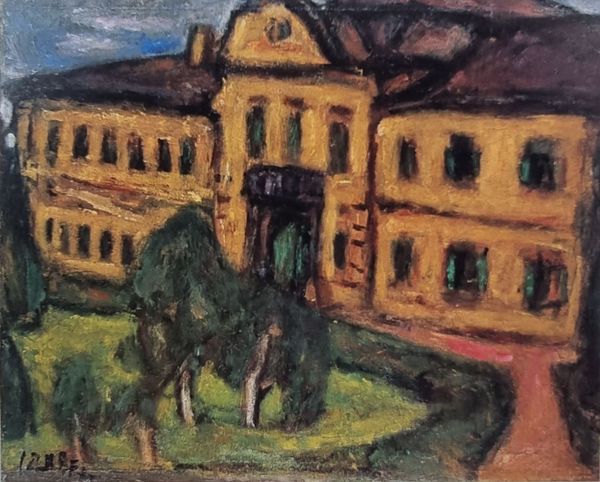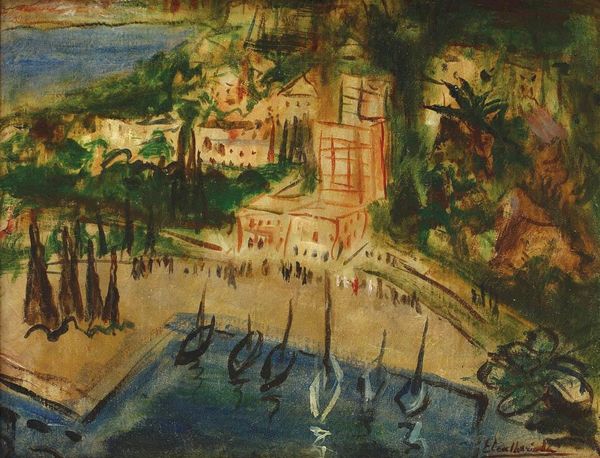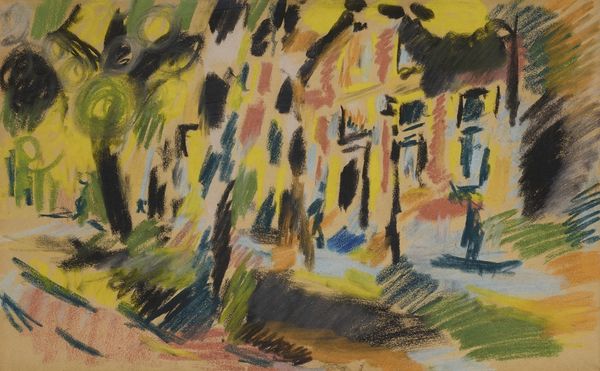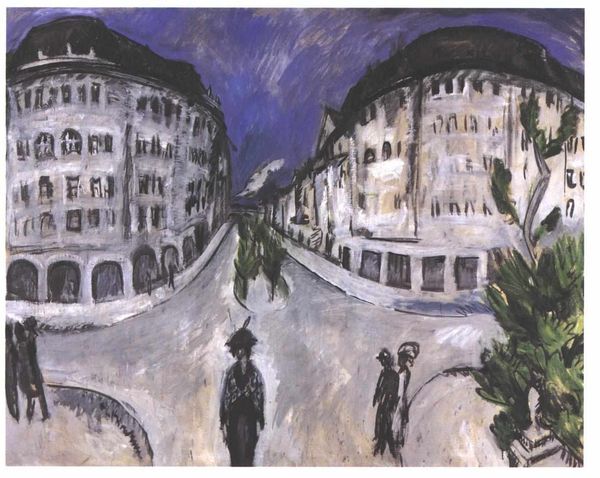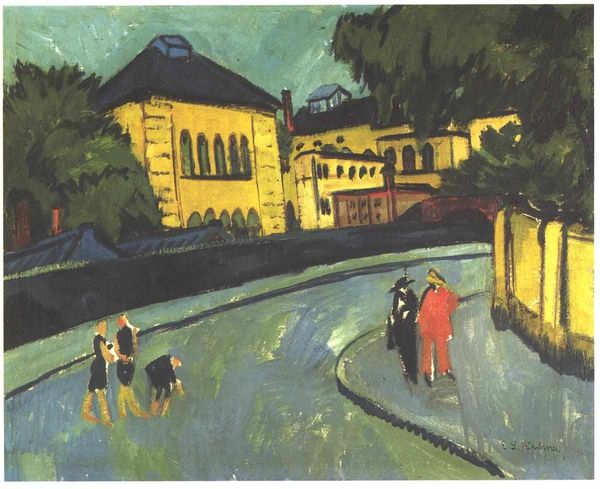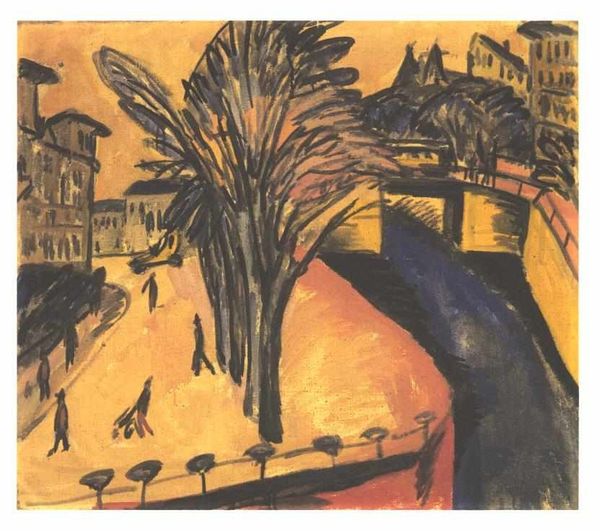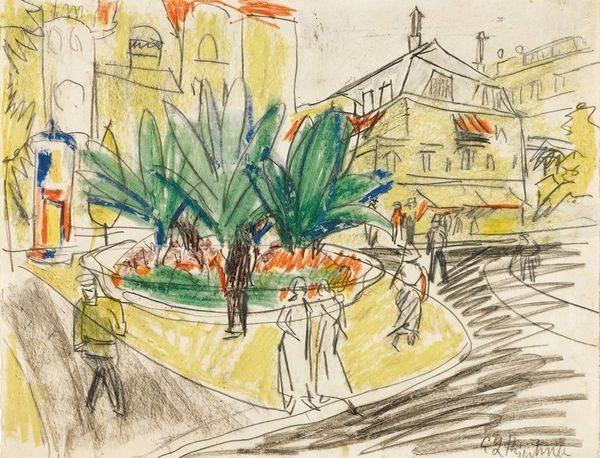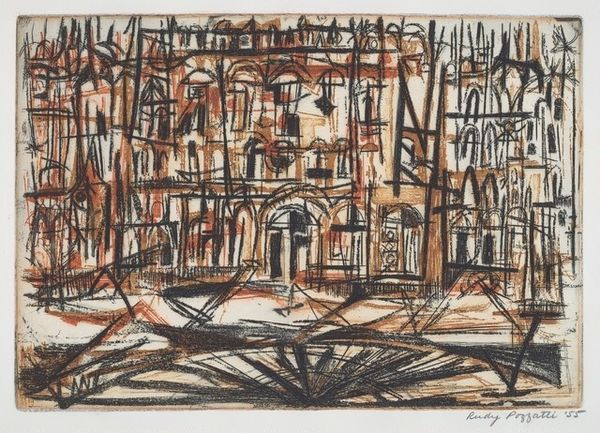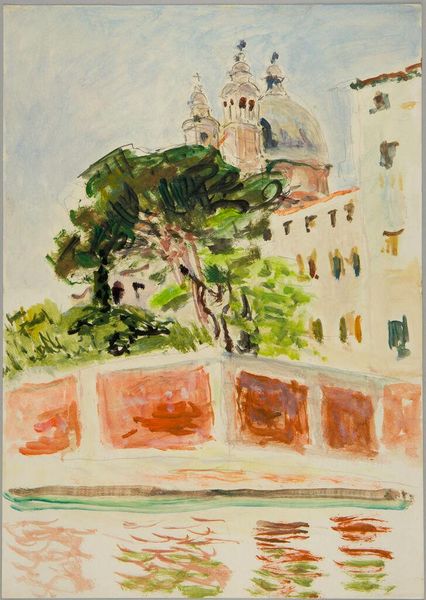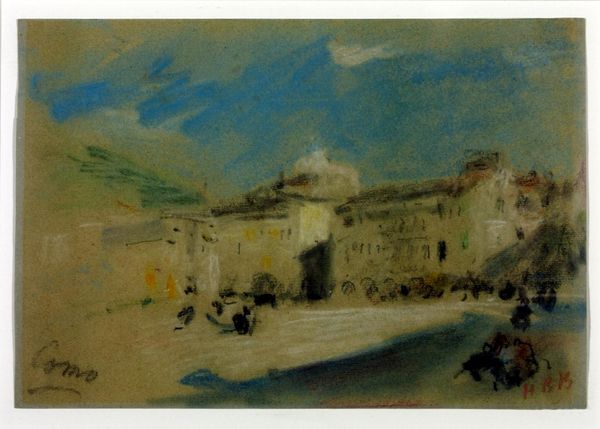
#
tree
#
abstract expressionism
#
abstract painting
#
impressionist painting style
#
vehicle
#
house
#
impressionist landscape
#
handmade artwork painting
#
oil painting
#
road
#
fluid art
#
acrylic on canvas
#
naive art
#
square
#
street
#
expressionist
#
building
Copyright: Public domain
Editor: Looking at "Tramway in Dresden" by Ernst Ludwig Kirchner, it’s the colours that jump out – this really striking combination of muted browns and blues mixed with stark reds and greens that feel sort of unsettling. What kind of story do you think Kirchner is trying to tell here? Curator: This painting feels deeply connected to the anxieties of early 20th-century urban life. Kirchner, as an Iconographer, presents the tram not merely as transportation, but as a potent symbol of modernity. Think about the tram's journey: a fixed route through a rapidly changing world. What psychological impact does such regimentation have on the individual? Editor: So the tram and the city are acting as symbols of larger forces at play? Curator: Precisely. Kirchner uses a distorted perspective, fractured forms, and disharmonious colours that serve to amplify that unease. Note how the figures lack distinct features. The painting speaks to the individual’s alienation within a bustling environment, the loss of identity, the psychological cost of progress. Can you sense how that plays out? Editor: I think I can, it’s in those stark contrasts – how you have the mechanical tram versus what I would assume are normal pedestrians going about their day. It almost feels like two separate realities. Curator: Very astute observation. Expressionism, as a movement, constantly sought to depict inner psychological states through external visual forms. This tension between mechanization and the natural human experience echoes throughout his oeuvre. Kirchner forces us to confront the unsettling truth that "progress" is not always harmonious; sometimes, it fragments and alienates. Editor: I see, so it’s less about the actual tram and more about what the tram represents – the unsettling speed and changes of the time. That really opens up how I read the whole scene. Thanks! Curator: Indeed. It’s fascinating how a seemingly simple street scene can hold such profound commentary. We come to realize that images possess an enduring power to mirror, record, and question the complexities of the human experience across time.
Comments
No comments
Be the first to comment and join the conversation on the ultimate creative platform.
